Marketing budgets are increasingly tight and the volatile climate isn’t helping. Businesses are always looking for ways to cut costs, but uncertainty adds even more pressure. Don’t let your content budget end up on the chopping block.
You already know that content can be a revenue driver, if you have the right technology and resources. This guide walks through how to showcase content’s value to leadership and secure the budget you need to execute your strategy. Learn how to craft a content budget that’s easy to understand and evaluate (and approve!).
In this guide, you’ll learn how to:
- Justify Content’s Value: Measure the performance of your content using sales-driven metrics like audience engagement and number of leads generated.
- Align Metrics with Business KPIs: Figure out which content areas you want to focus on and how they correlate with company goals. Should you adjust those areas?
- Prepare Your Pitch: Similar to evaluating a new CRM or proposed ad budget, leaders need to see exactly how an investment into content will impact the bottom line.
How To Write A Content Marketing Budget (And Actually Get It Approved)
Technology budgets are always tight. Even at the start of the year. There’s still volatility in the market that makes forecasting to next year feel even harder than market projection normally is.
When it comes to making strategic decisions about the technology you invest in, there are a few things we never seem to have enough of: time, budget, personnel, and strategy. If you’re left with one thing after reading this guide, remember that you’re aligning a content plan to realize overall company goals. If you focus on creating a solid strategic plan that creates a return on technology investments, it will inform and validate budgeting decisions therefore providing your content marketing department the tools needed to do the job.
We all know the feeling of being underprepared for a budget conversation, so that’s exactly the sentiment we want to help you avoid. We’ve all been there:
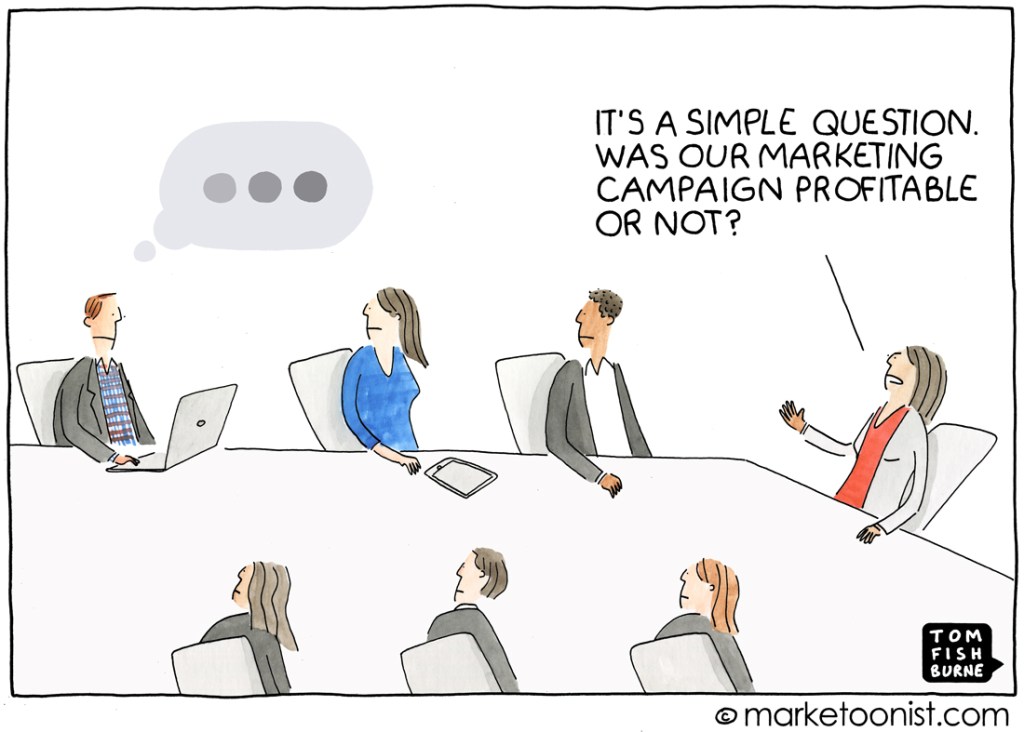
Content performed well in 2020, as more people moved online than ever before, and it’s projected to do the same into the future. If you want to capitalize on this rise and write a compelling content marketing budget that sails through approvals with decision-makers, you’ll need to set overall goals around content performance and stitch them into the fabric of your content strategy and budget.
Decide how content marketing serves you
In order to know how to allocate your budget, you first need to establish what your content marketing priorities are for the year and ensure that they ladder up to company goals.
This involves reframing the typical company’s “marketing as a cost center” mindset. Henry Ford once said, “Stopping advertising to save money is like stopping your watch to save time.” Fundamentally, marketing and advertising are an investment in a company’s future, and budget discussions should treat them as such.
Review company and marketing goals
Most companies start discussing goals for the following year in Q4 to close out the prior year and prepare for the new one. Board and executive meetings are scheduled in December to clear budgets before the next year rolls around. Usually there are planning sessions or some sort of sales/company kickoff for the year. These are the forums the content team should participate and present their plans again, roll up to the overarching company goals.
Your company should document these company goals, but in case they’re not, ask leadership if they can make available the slides presented at a past board meeting or share a document that includes company goals. Ideally, the company should consult employees on every level to set goals the whole company can rally around, though companies can set goals any number of different ways through different influences (investors, board members, etc). It’s impossible to make a budget that will sail through approvals without clear goals to use as a guide.
It’s impossible to make a budget that will sail through approvals without clear goals to use as a guide.
Once you’ve gotten clarity on company goals, sit down with your boss (likely a head or director of marketing), and drill down into marketing goals that relate back to those overarching company goals. These marketing goals depend on content’s success, and examples are growing organic traffic or creating more content types, such as lead magnets, website pages, blog posts, and sales collateral.
If one of the goals is to launch three major products this year, your associated marketing
(and hence content marketing) goals could be to generate $X revenue from the product launches and raise brand awareness.
At a loss when it comes to content marketing goals that are measurable and quantitative?
When all else fails, return to your customer’s journey to define key metrics at each stage of the funnel, identify weak spots, and leverage data to improve conversion on content) along
the funnel.
For example, maybe you’re converting visitors well, but you have relatively low traffic overall; then focus on creating more top-of-funnel content. Or if you have tons of traffic but that traffic doesn’t convert well, focus on conversion opportunities and bottom-of-funnel content.
Here’s what you’ll need to consider for planning the right strategy. Make sure whatever strategies you land on align with the larger marketing and company goals at the corresponding stage in the customer journey:
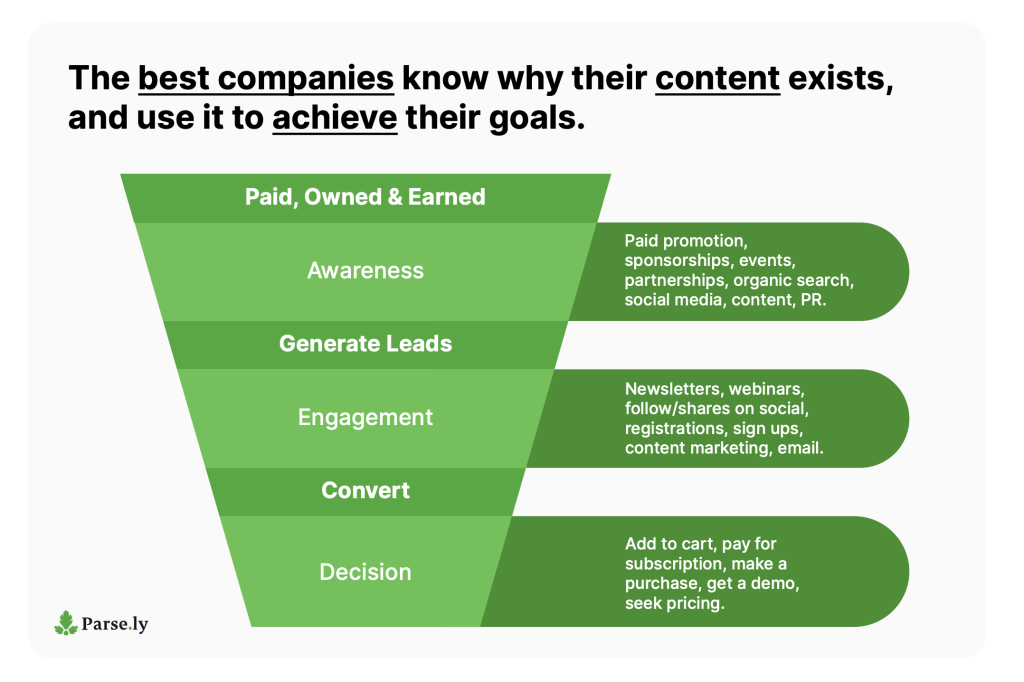
Avoid false starts. Be proactive and explicit about communicating how your content goals fit into the broader vision. Winning buyin from stakeholders beforehand, gradually, is the long-term hack to success to getting what you need for your content department, no matter how big or small. If you wait until the budget meeting to share your aspirations, you have limited your own success and set yourself back.
Focus on Meaningful Metrics to Determine High-Performing Efforts
Avoid common pitfalls such as, not using data to identify what content is performing well. Getting buy-in for your strategy and budget goes hand in hand with your company’s KPIs to track progress against those goals, so determining and measuring accurate KPIs. As such, the KPIs of content performance should be part and parcel of your budgeting process.
Assess which content is performing well in your content analytics platform, based on the different content goals you have. As examples:
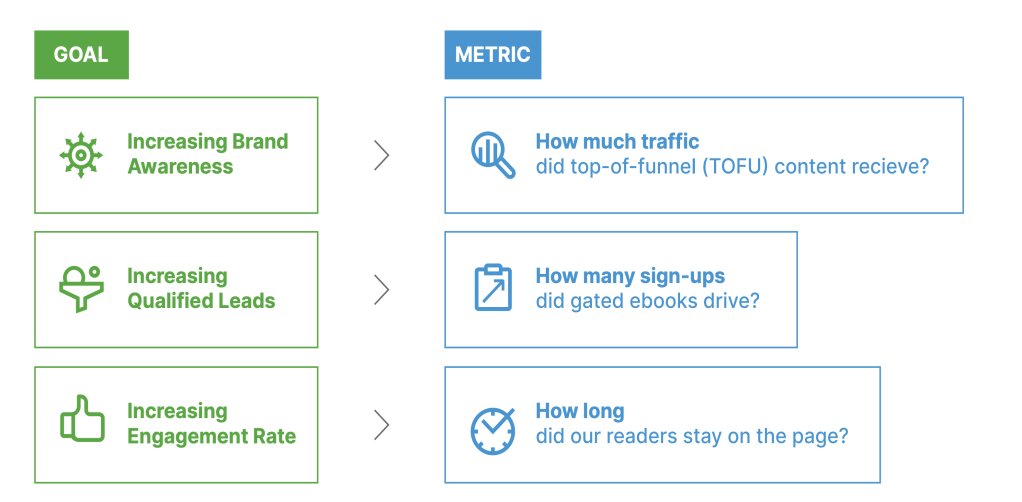
To build upon past content success, hypothesize on what went well or what went wrong with the existing content, based on performance. Iterating on what’s already working is an excellent place to start and a heck of a lot more efficient in terms of stretching your dollar or the time expended by the team. Workshopping a failed piece of content to try to salvage it and reinvent the wheel just doesn’t make sense in most cases.
What happens when your budget changes?
Inevitably, the budget will need to change to encourage stronger performance in the areas of content you intend to focus on. This may involve adjusting which metrics you measure or developing more competencies or sophistication in measuring content metrics that matter.
According to 2020 research conducted by CMI, “More than three-fourths (78%) of B2C marketers use metrics to measure content performance; of these, 63% have established KPIs and 51% measure content marketing ROI.” Although a majority are measuring content performance, the numbers whittled down from there for companies tracking content analytics in a meaningful way, such as mapping KPIs and tying content back to ROI. These are two best practices for a high functioning content program.
Opting for more meaningful metrics will likely entail avoiding common content metrics that don’t accurately reflect performance. An all-too-used example of an inactionable metric is a vanity metric, focused on big numbers and optics. CMI reported in 2020 that “81% of B2B marketers report their organization uses metrics to measure content performance.
Website traffic (90%) is the metric that is used most often. ”But website numbers are meaningless; what content marketers should aim to measure is true engagement as their ultimate content metric. And we’re not talking about pseudo-engagement metrics like bounce rate. We’re talking about how readers interact with a piece of content. Parse.ly’s heartbeat pixel, for example.
Check out this Details Report, a snapshot of various lead sources of how people found your
content:
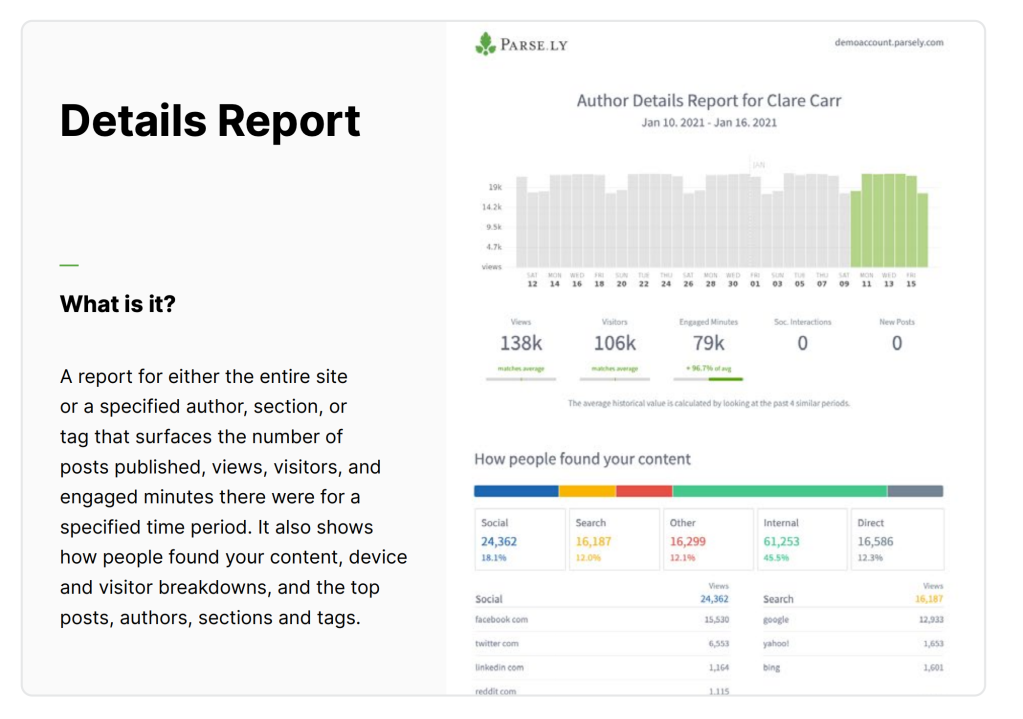
With this proprietary metric by Parse.ly, movements like cursor movement, scrolling, clicking, and video playing are all accurately tracked, presenting you with deep but actionable data on your audiences.
Organize, adjust and show your work
Now that you’ve given thought to your content goals and how to adjust your strategy moving into next year, document changes to last year’s budget in a spreadsheet.
Here’s a sample budget spreadsheet, a free template available to download from Smartsheet.

The key is to show your work and ensure that the final deliverable is catered to your decision-makers. Show budget changes from year to year (we’d add a column for last year in the spreadsheet above) and results of hypotheses and tests in simple, digestible reports.
Documenting to this degree takes a lot of work, but it’s well worth it. According to CMI, teams that fully document their content marketing strategy have the most successful content programs. Simply writing your strategy down does help, and leads to better outcomes. (Your boss would probably appreciate it too!)”
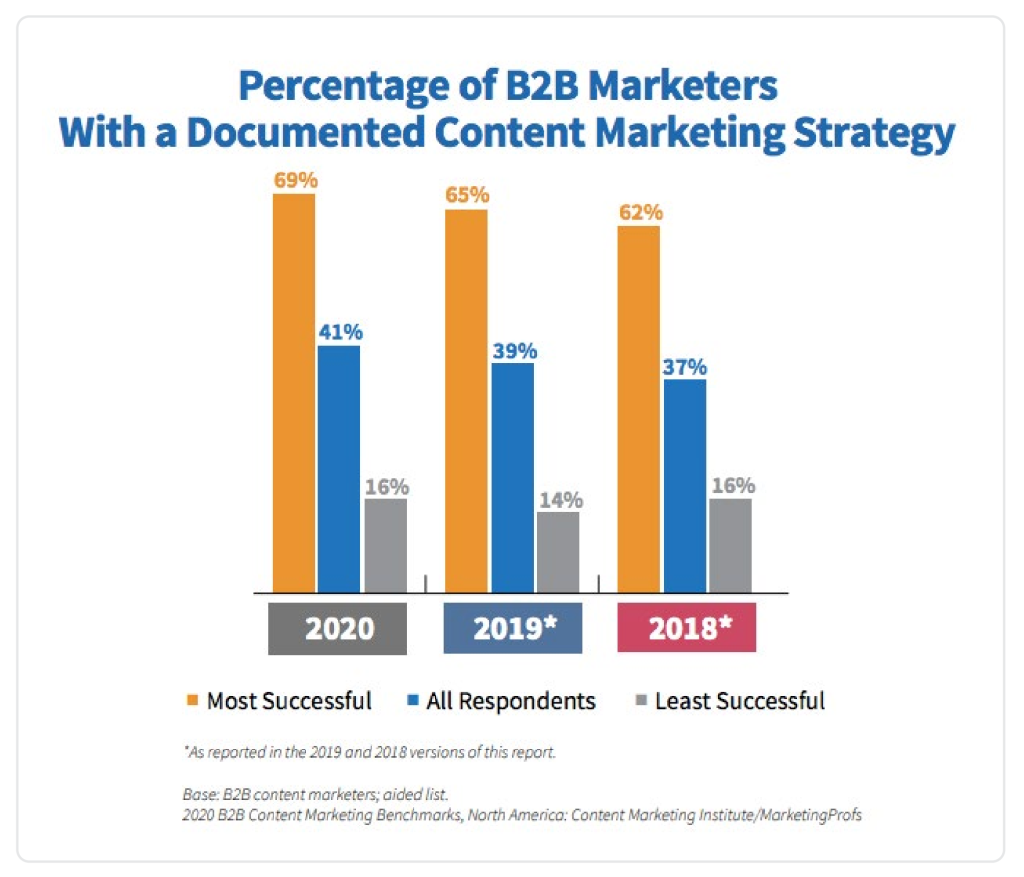
Yes, simply writing your strategy down does help, in and of itself, and leads to better performance outcomes. With this spreadsheet as the main component of your budget, we recommend putting more details, data, and comments in other tabs. With this “scratchwork” tucked away on other tabs, it’s easy to provide supplementary information to your boss, if needed, or pick up where you left off next year to know how you arrived at the decisions you did.
List current investments
On the main tab or on another one, document your current content marketing expenses and allocated budget. Don’t forget to hyperlink to your content strategy document to pair the two from the get-go for the reviewer.
- Analytics tools (web analytics, content analytics, dashboards)
- Social media publishing/analytics
- Email marketing software
- Content creation/collaboration/project management
- Research resources
- Design tools or resources
- Customer relationship management (CRM) system
- Content management system (CMS)
- Marketing automation system (MAS)
- Content distribution platform
- Content performance/ recommendation analytics
Additionally, as with any other marketing best practices or recommendations, these can vary by industry.
A major consideration on any content marketer’s mind, of course, is how content is written. Investments vary, and solutions are plentiful, depending on types of content you need written, expertise needed, and a host of other factors. According to CMI, 49% of B2B marketers outsource at least one piece of their content marketing, and most commonly, it’s the most costly, in terms of time: the content creation itself. It’s the quintessential content marketing dilemma: How much writing will be allocated to full-time employees versus freelancers versus an agency? Perhaps the better question is, “Which content should we outsource, and to whom?” Consider a range of content writing solution —there is content at every price point, without sacrificing quality or expertise.
Adjust costs based on goals and content performance
Adjust costs as necessary based on broad company goals, marketing department goals, and content performance. As some benchmarks, consider this matrix of 2020 content marketing budgets for B2B companies.
As an example, if you’ve got 60 people in your company, consider investing no more than $100K in your B2B content marketing efforts, and leave the days of operating without a content marketing budget behind:
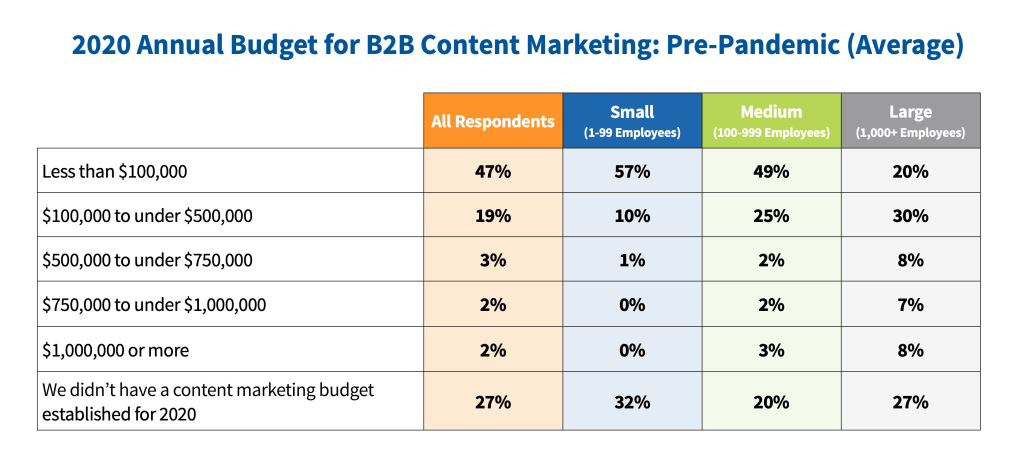
You may also want to group investments into categories, such as paid versus organic content opportunities or phases of content, such as ideation/development or promotion, with rough percentages of the overall content or marketing budget assigned to each category. Seeing these percentages at a glance can really help with the later refinement stages.
Before presenting the budget to leadership, create a few “scenarios” for decision-makers to choose one of a few options of how to allocate funds. Think in terms of 1) base, 2) goal, and 3) stretch scenarios. What would you do with a “base” amount of funds, a “stretch” amount, and somewhere in between? You could even lightly “brand” each of these potential choices to provide a framework for discussing investing themes for marketing:
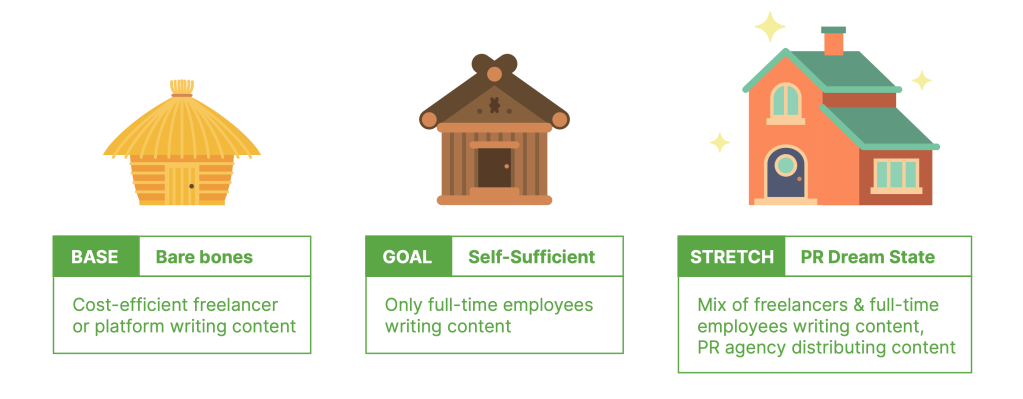
Craft a budget pitch for leadership
Content marketers have always been prepared to have their budget slashed. So it may surprise you that even in the current climate, content is thriving.
It’s unfortunate, though, given how content has thrived during COVID-19, that content would be on the chopping block. Don’t allow your leadership to slip into that mindset, and be the champion of content as an opportunity. When that fails, go into budget conversations armed with solid defenses about why content matters in general, and then
matters to your company.
Why content matters:
[a guide / your strongest defense / a playbook]
Decision-makers aren’t always familiar with content’s role in marketing. To be more specific: the foundational role content plays in the overall marketing mix. Justifying content often arises in budget conversations, so it’s best to go in with the expectation and confidence to tackle these doubts head-on.
In your presentation, include a slide or two at the beginning about why content matters to the organization to build your case from the get-go. You can do this in a few ways:
- Cite content marketing statistics. CMI and Marketing Profs have reports, graphics, and resources galore to include and cater to B2B/B2C as applicable, and by industry. Choose
relevant statistics to build your case. - Consider mapping the success of a past piece of content. Check out your list of top 10 blog posts or pieces of content in the past year. What made it successful, quantitatively
- Ex: This blog post got two backlinks within a month of publishing, bumping the domain
authority of our site from 50 to 60 in the course of a quarter. - Ex: An option that is sticky for leadership is the most-cited blog post in sales conversations
about how the lead found out about the company, showing an immediate ROI.
- Ex: This blog post got two backlinks within a month of publishing, bumping the domain
- Show your historical data. Charting movement on things like sales conversions, overall traffic, and engagement. Relate how much effort, time, and investment was poured into the content marketing program along the way to achieve up-and-to-the-right trends.
Connect the dots between your budget and company goals
Be explicit about how each line item or category of content relates back to company
goals. This should be really linear. We recommend that you list each company goal that the content marketing goal ladders back up to on the slide. Tie the two together at the outset, and let that form the structure of the order or flow of your presentation as a byproduct.
You may assume that decision-makers could make these connections themselves, and they can; they’re smart people. However, making the pitch clear and strong allows for less unsupervised thinking (widely regarded as a scourge in sales conversations) and doubt to settle in around it.
Allow enough space for decisions and questions
As important as it is to prepare for your presentation, you also need to prepare for
post-presentation, too. Ensure that decision makers have enough time in the moment to think through what you’ve presented and feel heard in their questions and concerns afterward.
At the outset of your presentation, state objectives for the meeting, along the lines of,
“At the end of this, I’d like to collect feedback on the proposed content budget and for us all to align on where we want to invest in content marketing next year. I will then take your suggestions and factor them into revisions.”
The presentation itself, obviously, should depend most upon how much time you are given the floor. What should be 20 minutes of presentation can sometimes be relegated to only five minutes. To fully explain your department’s needs, along with reasoning and credibility building for content overall, our recommended presentation length is 15-20
minutes.
What may be more important, however, is not allowing questions after your presentation to
be an afterthought. Give equal response time to questions as in the main presentation, so 15 minutes presenting, 15 minutes for answering questions. Your audience, the decision-makers, should feel like they can lean into the space and think critically, and that you, the representative for content, are fully hearing and responding to your concerns.
If you do run out of time, warmly solicit additional questions via email or chat, and make that a clear call to action. Finally, impose a clear deadline to follow up.
Stay on top things by reporting on content ROI
Understanding and communicating the value of content to your company is invaluable in setting yourself up for success year over year and getting your content marketing budget approved.
Your motivation should be as much about your own success as it is about the company’s in doing this budget justice. Reporting on your success frequently and consistently will help you circumvent challenges and set yourself up for a year of success.
If you can’t confidently measure your content’s analytics today, take advantage of the content analytics insights of Parse.ly’s platform to collect the right data that wows your leadership team and makes budget conversations focused on the content team that much easier.
With regular and easy-to-pull reports, Parse.ly can enable early and often reporting to other company stakeholders, making content team related budget conversations even easier moving forward, since you’ve been sharing insights all along, like this “Top Posts” report:

Now, go get that green light and green money in that budget approval meeting, and check out Parse.ly to begin building the case for more actionable content analytics to your boss.